Table of Contents
Sansha & Blanco
Introduction and Preview
January’s featured comic is Sansha & Blanco, which was written by Ray Chou, illustrated by Vensensius Suriansoo, and lettered by Cristian Docolomansky. It’s a four issue mini series published by the powerhouse imprint Mythworks, which is owned and operated by Ray Chou and Vincenzo Ferriero. The story is told from the perspective of two dogs, exploring themes of freedom, family, love and change.
You can pick up the first two issues on Kickstarter until February 4th. Here’s a link to the campaign: https://www.kickstarter.com/projects/mythopoeia/sansha-and-blanco-1-2?ref=bujyxo
An Interview with Ray Chou
by Curtis Clow
Ray Chou is the writer of Sansha & Blanco and co-founder of the crowdfunding juggernaut Mythworks. Ray and Mythworks were on Kickstarter years before I launched my first Kickstarter, and he paved the way for creators like me. He was someone I watched and learned from closely. Way back before I ever made a comic, I met him at Long Beach Comic Con and he gave me some words of wisdom. We’ve since become friends and talk about the state of comics and Kickstarter a lot.
CURTIS: Sansha & Blanco feels so different from Mythworks' other comics like Skies of Fire and Glow with their steampunk and fantasy vibes. Was that an intentional thought, to switch it up having this comic set in the real world? Or did the creative juices make that choice for you and guide you in this direction?
RAY: Definitely more of the latter, with the creative juices happening to flow in that more grounded, real world direction! The story is based in large part on the mundane everyday of my own life, walking the dog, living in nowhere suburbia, California. That said, I think there’s wonder and stories to be told everywhere, so I wanted to create a story that encapsulated a different point of view of the world around me along with hopefully telling the “secret” story of my hometown.
You can see that in the way the environment changes in Sansha & Blanco over time - in the past timeline, the dogs live in a trailer park with a drive-in movie theater that eventually is paved into a gated community with little box houses. I wanted to reconcile some of my own memories and feelings growing up in these environments and seeing things slowly but surely change over time in my hometown.
CURTIS: What inspired the story of Sansha & Blanco and what made you want to tell it through anthropomorphic dogs?
RAY: Sansha & Blanco is based on an encounter I had in real life with my old dog Fatty (who is actually the antagonist of the story) and the two dogs living next door. One night, Fatty started barking. I let him outside, where he encountered a larger black dog. The two began fighting and I had to kick the other dog away. The next morning, I noticed that the black dog was my neighbors. She and her brother were confined to an overgrown backyard and never walked by their owners. I grew sympathetic to them over time and wondered what their lives must be like. That’s where the story comes from.
CURTIS: The art in this comic is breathtaking! I really love the watercolor feel that we don’t see too often in comics. What kind of iterations did the team go through to get this look down? Or did the artist, Vinsensius Suriantoso, have it down from the start?
RAY: Thank you! We went through three major iterations for the art style in Sansha & Blanco. Like all of our projects, we started with an open artist search where we found Vinse. At the time, his style definitely leaned more towards a manga aesthetic, which was great, but not necessarily what I had envisioned. Nonetheless, he resonated with the story the most, which I honestly feel is the biggest component to working with artists.
We started thumbnailing and doing initial pages with him, but an opportunity came about to work with Ariel Colon, a watercolor artist, who had done a couple of variant covers with us. He was asking for more work, and I thought blending their two styles would be an interesting artistic experiment. We asked Ariel to essentially paint over Vinse’s thumbnails, and the result was a hyperrealistic style that was version two. We were pretty happy with this iteration, but it was a slow process and Ariel began finding great success as a cover artist for other companies like DC.
Seeing that we wouldn’t be able to do the entire comic series in that hyper-realistic style, we went back to Vinse and asked him if he was interested being the sole artist on the project. He said yes, and our direction for him was to sort of blend what Ariel had shown and his own style, which landed us on the final look and feel of the comic. We’re really happy with how it turned out. Most of our projects go through these major iterations of art - we’re pretty particular with what we like, but at the end of the day I think it always helps enrich the collaboration amongst the entire creative team.
CURTIS: Mythworks has had some of the biggest indie comic Kickstarters ever. Sansha & Blanco, though only on its second Kickstarter has been a lot smaller than your other comics, at least so far. I think the book is great with beautiful art and heart. It deserves just as much success as your other titles but just hasn’t gotten there yet. What do you think are the biggest factors in Sansha & Blanco not quite hitting those soaring successes yet? We see the quality of a book doesn’t always translate to success, but what do you think is the most important thing when it comes to making hits on Kickstarter?
RAY: There are a couple of major factors, I think. For one, in the last few years we entered into both publishing and the tabletop roleplaying space, which has taken up a lot of our time, effort, and energy. We’ve been working on Sansha & Blanco since 2017, but to be honest we haven’t had as much bandwidth to devote to marketing and supporting the project as we did for Skies of Fire and Glow. It’s been great seeing Mythworks grow, but the biggest challenge has definitely been balancing the creative with the business side, especially now that we’re publishing other creators’ works.
The second major factor is that fundamentally Sansha & Blanco is a drama and maybe even a tragedy. It’s a darker, more mature story, and not everyone wants to read a story that will maybe make them sad. That said, I think it’s an important story for me personally as a creator, and one that has been artistically fulfilling and one that I’m extremely proud of.
I think the biggest factor for Kickstarter is how much of an audience you’re able to mobilize on Day 1. Overall visibility for your project is determined algorithmically by those first 48 hours, so the more backers and funds you can raise in that time, the more you’ll get the platform to work for you.
That said, I think there are some real challenges to Kickstarter - especially Kickstarter Comics - in 2025. It certainly seems like although the numbers are larger in aggregate, bigger publishers and franchises/celebrities are sucking some of the air out of the quality indie works that can potentially help platform and launch the careers of creators. I just don’t see that many new comic creators breaking in through Kickstarter anymore, and that’s really sad. That, and of course the spectre of T&A makes the category pretty unattractive these days for random visitors on the website. Hard to browse Kickstater Comics these days at say a coffee shop when the front page looks like some sort of demented cartoon OnlyFans.
CURTIS: You and Mythworks have been around since before I ever launched a Kickstarter. You all even started launching TTRPG’s on Kickstarter and have had a ton of success in that category as well. What has launching and publishing/creating TTRPG’s taught you that you’ve been able to take over into comics? What does the TTRPG space do well that you wish comics was better at? And vice versa to comics strengths over TTRPG’s?
RAY: To be honest, it’s been a lot of the other way around; I attribute a lot of our crowdfunding success in TTRPGs to what I learned crowdfunding comics. The fundamentals are the same - you’re selling a story more than a product, and the page itself should read like a project or business prospectus. First impressions are everything.
That said, there are a couple of key differences. The TTRPG space is booming, for one, while Comics seems to be constantly contracting. What that means is once the crowdfunding is over, there’s a lot more opportunities to grow the project / business in traditional ways like webstores, distribution, etc. The Board Game industry has something like 4-6 major distributors and a bunch of smaller ones. The Comic Industry up until 2020 had 1…
And honestly that makes all the difference. TTRPGS has allowed us to build up the company of Mythworks in a way that unfortunately comics never did. Because of the health of the other channels outside of crowdfunding, we’ve been able to learn other platforms like Shopify and work out scaling with warehouses and distribution to create more of a bedrock for the company.
I wish comics were better at - everything! But mostly, supporting emerging creators and not getting hung up on licensed properties / the big two. They’re so time consuming and difficult (expensive!) to make. On the flip side, man, it’s hard to say. I honestly think comics can learn way more from TTRPGs than the other way around. That said, there are definitely more comics / graphic novels stories that are ‘timeless,’ for lack of a better term. TTRPGs are a tool to tell stories, whereas comics are a vessel for stories - some of the greatest that have ever been told.
CURTIS: You’ve launched a ton of Kickstarter campaigns across multiple categories. What are some of the biggest tips you can give in having success and growing a community that will continue to back future campaigns?
RAY: Communication is key. Keep people up to date on what you’re working on and where you’re at. Build that audience through a mailing list and try not to be beholden to any one platform, whether it’s Kickstarter, BackerKit, Substack, or whatever. Your fans are invested in you as a creator, which means that they want to hear from you and watch you grow. Honestly, this is all advice I’m telling myself because as we’ve become more of a company, I feel like we’ve lost that personal connection a little bit. Focus on the work, keeping people up to date, and the rest will come.
CURTIS: What can we look forward to in the future for Sansha & Blanco, do you have a number of issues you’d like to hit for this series? What other new comic launches does Mythworks have coming up?
RAY: We have four issues of Sansha & Blanco completed, and we hope to release the last two in 2025 as well. We also have a couple of comics that we’re publishing from other creators this year, but we’re not quite ready to announce those just yet. Glow is coming back with issue #7 as well as hopefully issue #8 this year. We’re super excited for those as they begin to answer some of the big mysteries of that world.
I’m working on a pair of new scripts / projects behind the scenes, but those probably won’t see the light of day this year. One is a fantasy-fantasy in the Dungeons and Dragons vein, and the other is a sci-fi tale that takes place in the backwaters of the galaxy. I’m making more time this year to work on creative comic stuff - if people want to follow along we started a mailing list specifically to blog about our progress on that stuff!
The Dogs That Inspired Us
by Curtis Clow
It’s clear after reading Ray’s answers to my questions here and chatting with him on our podcast that the inspiration behind Sansha & Blanco comes from his real life. Specifically from his experience walking his dog one day after an altercation with another dog. I can relate, because my inspiration for Beastlands came from a similar place. Years ago my dog Ellie (a pup at the time) was hit by a car and I had to carry her while hectically driving to the vet. At the time I thought she might be dying in my arms. She was in rough shape. Luckily with months of extra care it all worked out.
As writers these things we experience in life become the seeds and inspiration for our stories. I’m of the opinion that is where the best art comes from. Ellie is very much the heart of Beastlands. Hearing Ray talk about how his old dog Fatty is actually the antagonist of Sansha & Blanco brought me back to that moment with Ellie and how integral it was to my creative process.
In my earlier days of writing I always heard the saying “write what you know” tossed around. But when you don’t have as much life experience yet I wasn’t quite sure what the themes and stories I wanted to tell were. Now after ten years of writing comics and plenty of livin’, I have a clear sense of the stories I want to put out into the world. After learning about Ray’s sympathy for the dog that fought his own dog and the freedom he imagined it could be yearning for, it’s clear to me what the theme of Sansha & Blanco is. A strong theme that you believe in or that comes from real life experiences is what I believe is one of the most important keys to writing a great story. That’s what makes Sansha & Blanco so good and why I strongly recommend you check it out!
Signing Off
by Curtis Clow and Caleb Palmquist
Thanks for checking out the fourth issue of Ink to Table. If you have a suggestion for an amazing comic book coming up, or you have a comic you’d like featured, please feel free to contact us and let us know! We now have companion podcasts for each issue where we chat with the creators of the comic we’re covering. Don’t forget to subscribe!
This month’s comic was Sansha & Blanco. It runs on Kickstarter until Tuesday, February 4th. If you’d like to check it out, here’s the link: https://www.kickstarter.com/projects/mythopoeia/sansha-and-blanco-1-2?ref=bujyxo
Until next time,
Curtis & Caleb







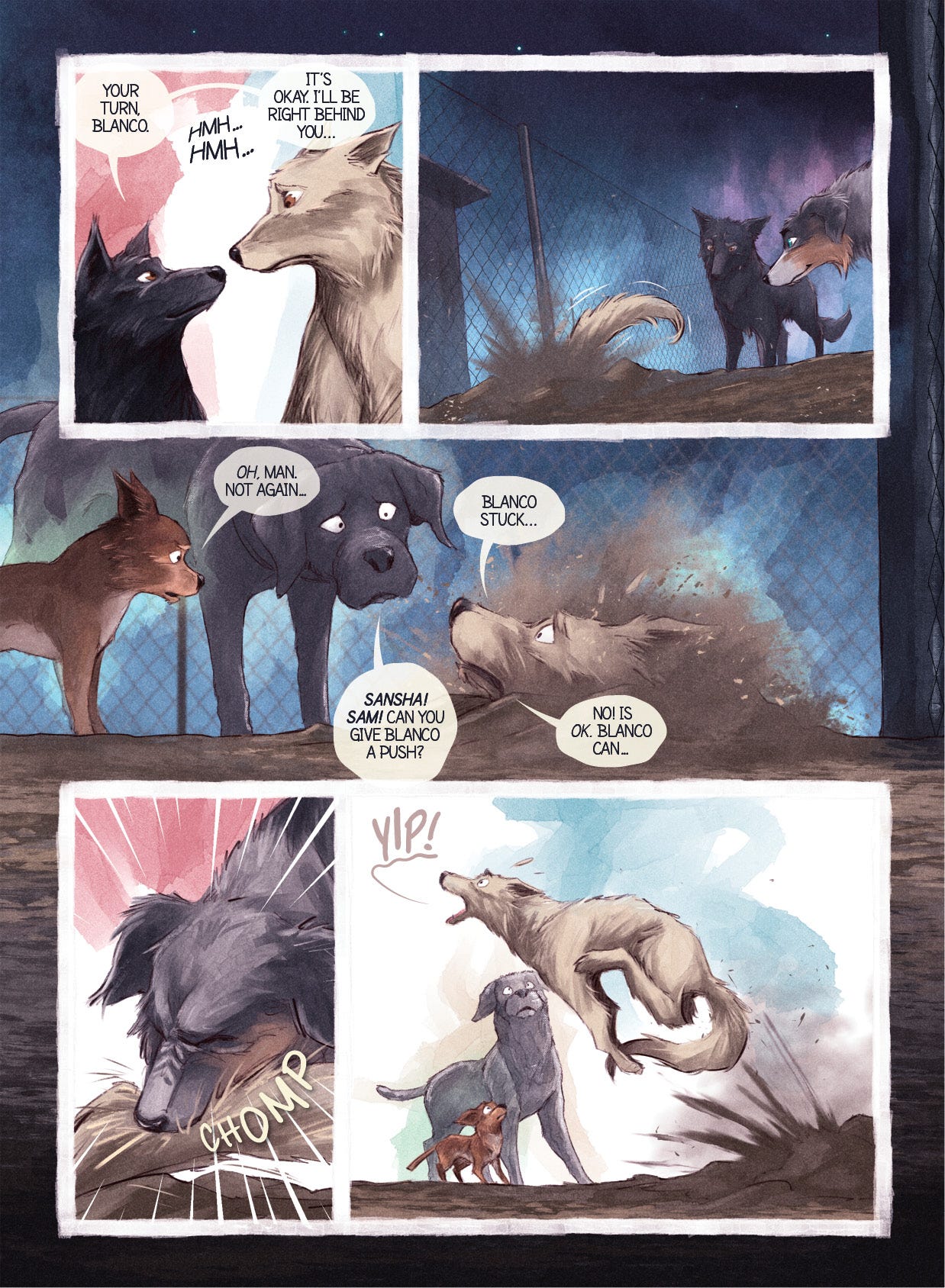

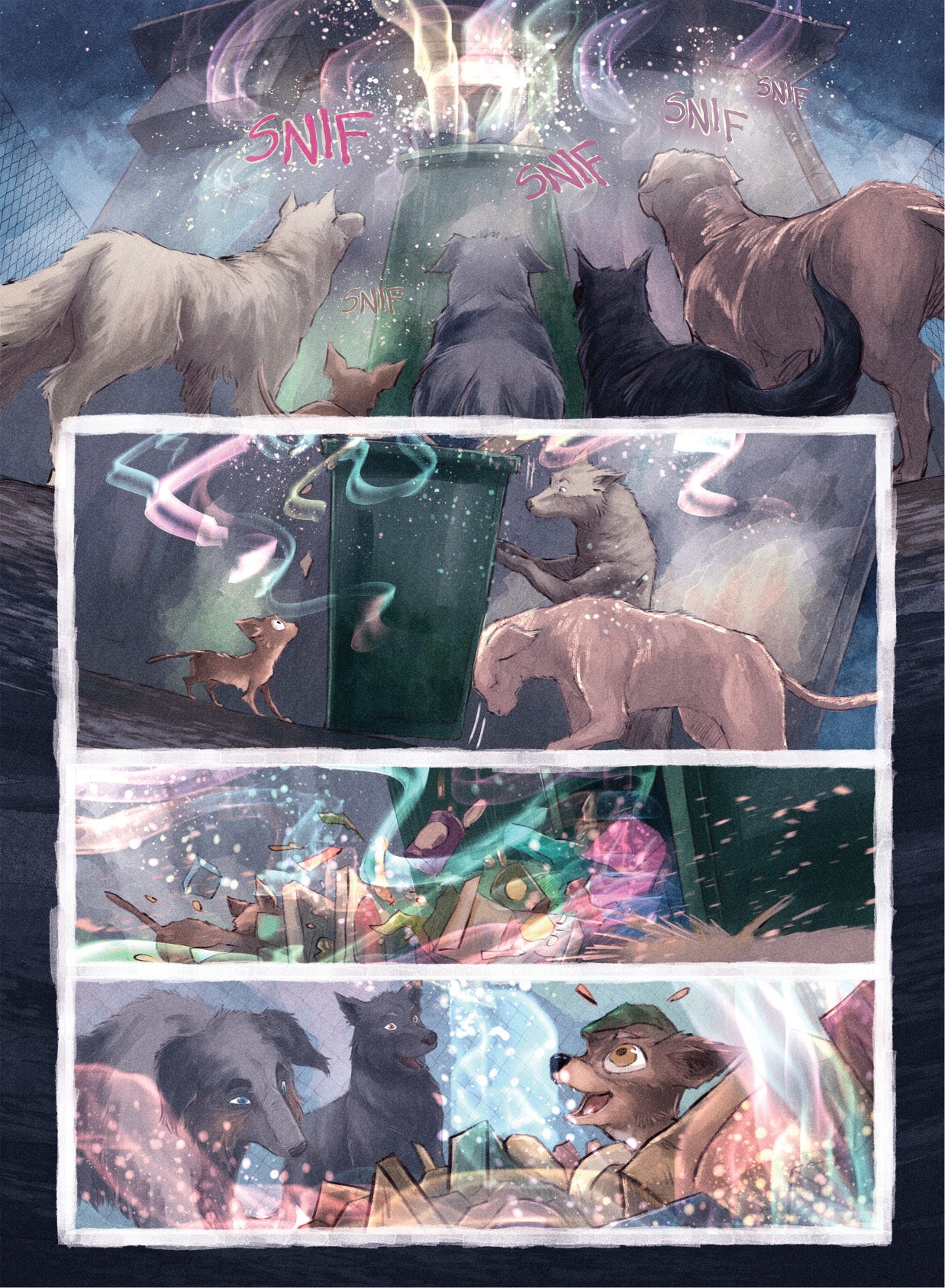

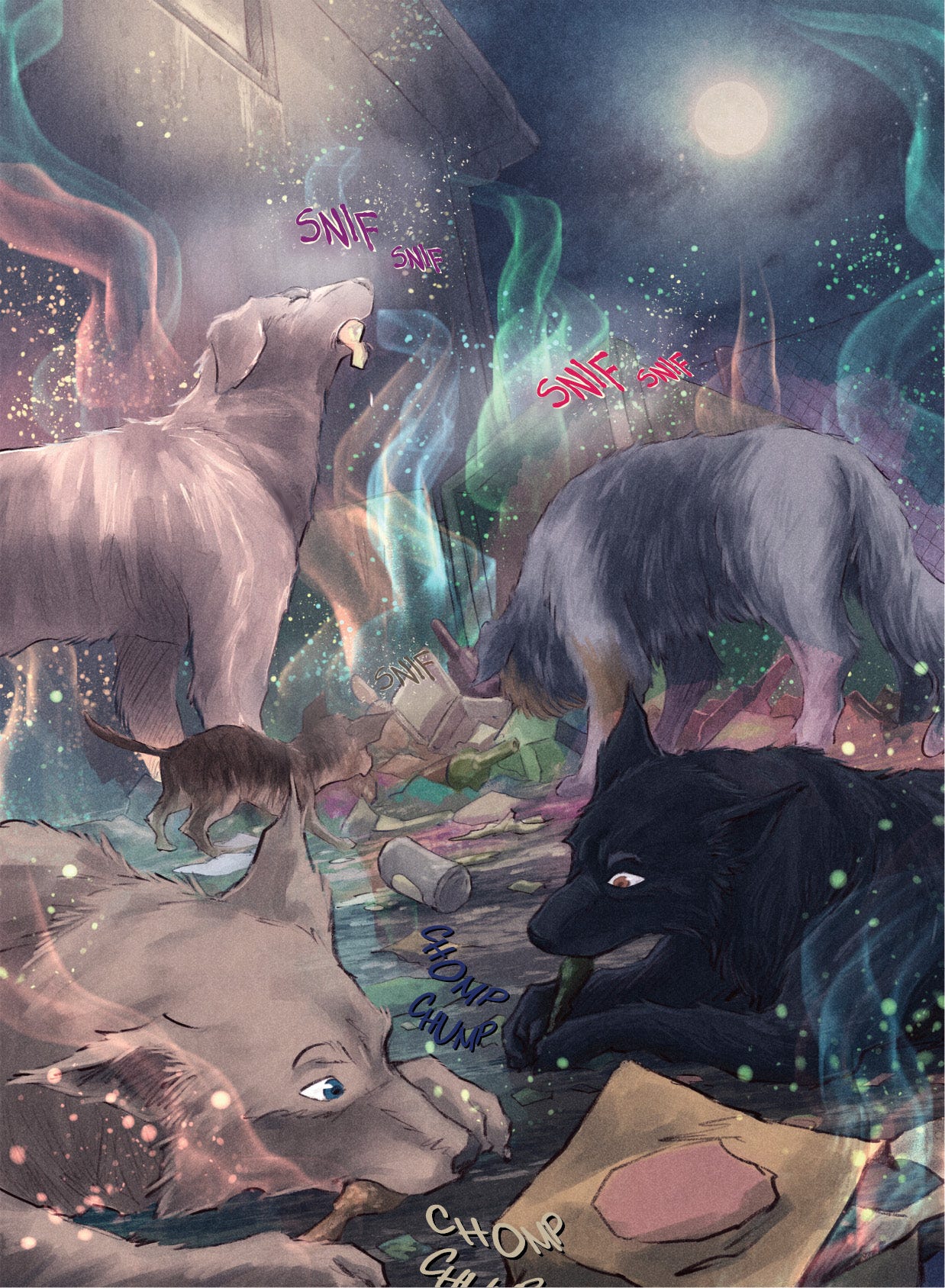
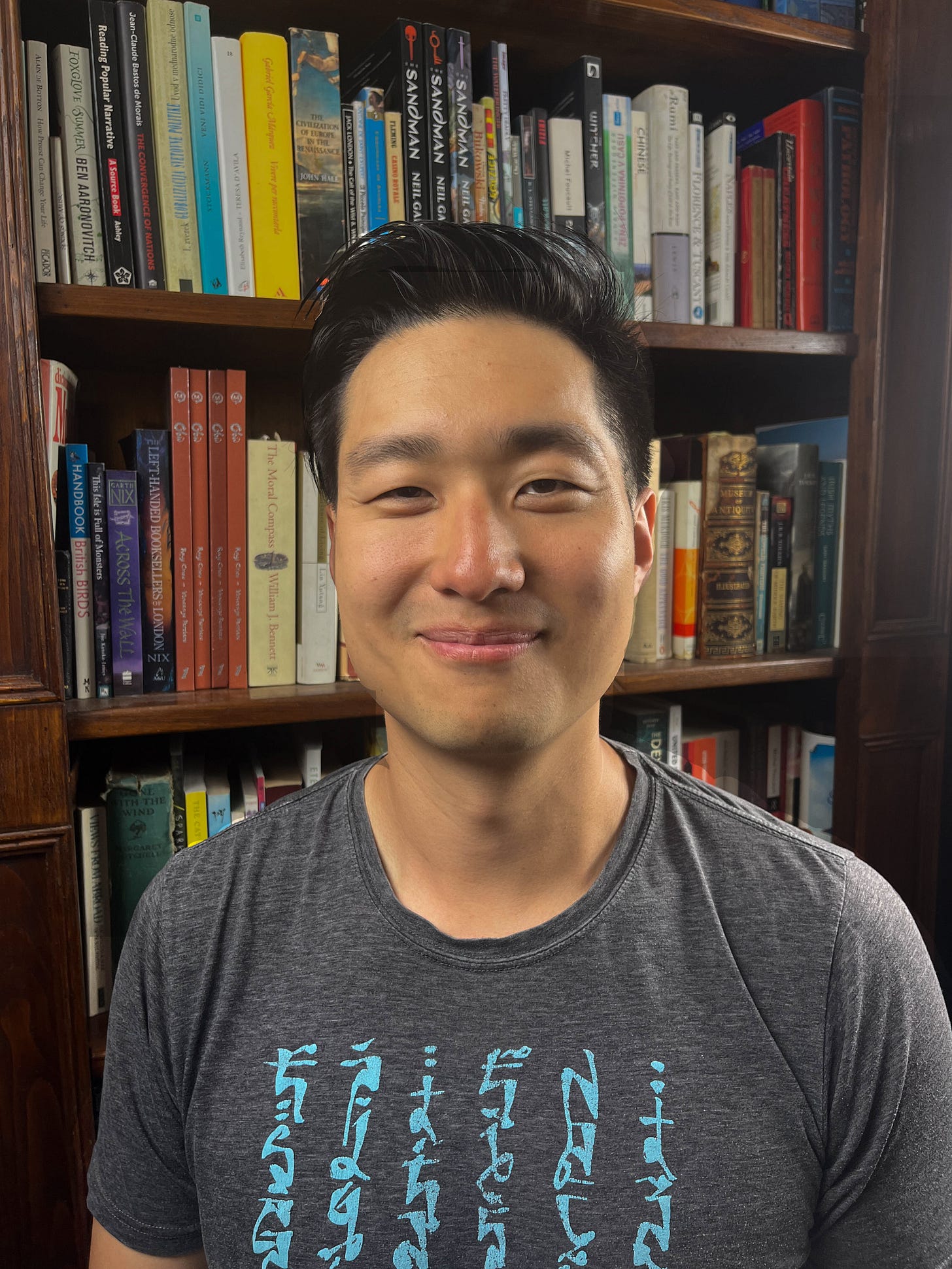

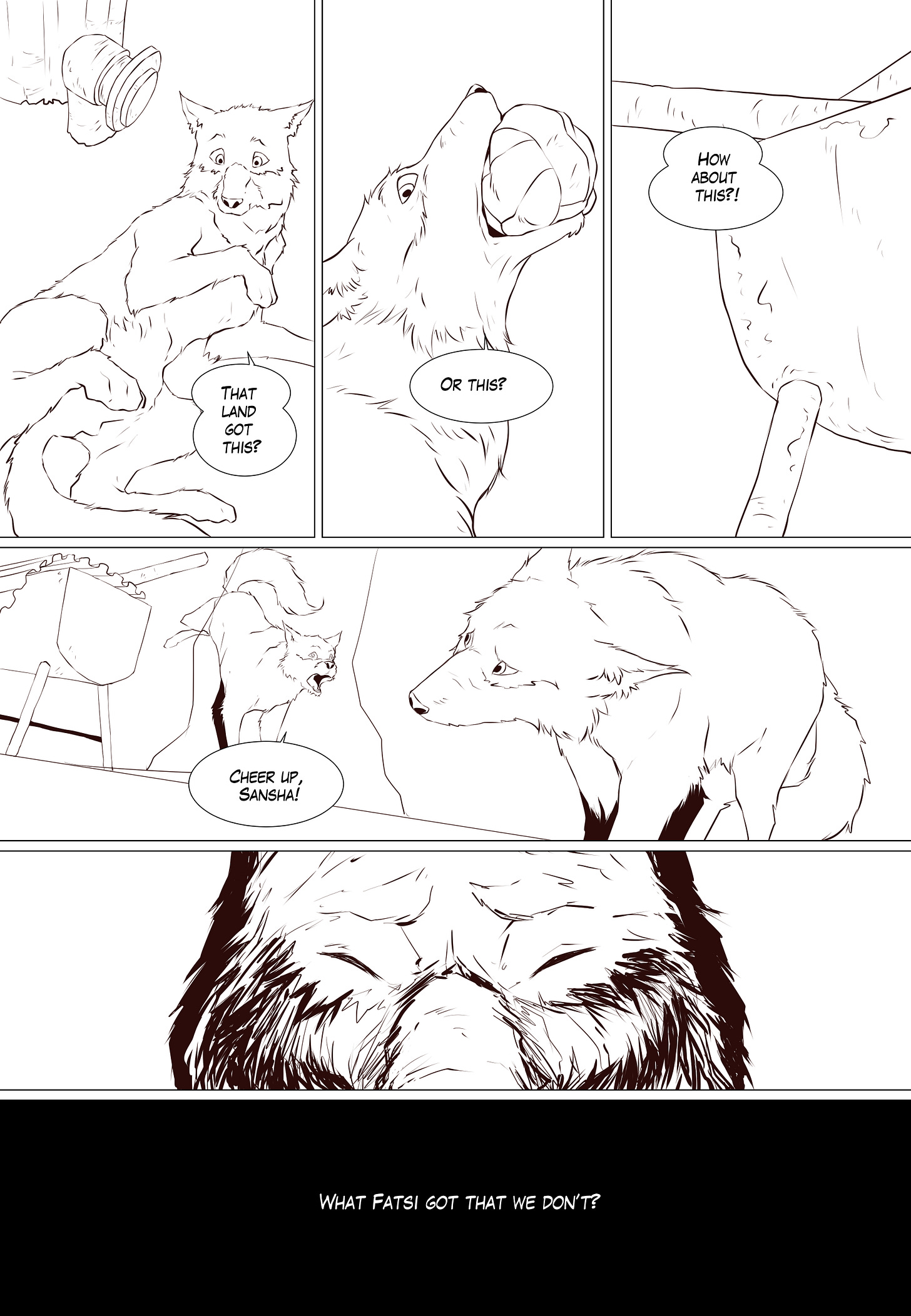


Thanks for having me, Ink to Table!